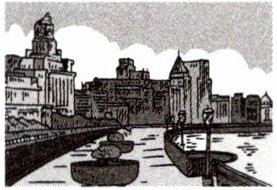1.  (
(
2. (
(
3. (
(
4. (
(
 (
(×
)2.
 (
(√
)3.
 (
(×
)4.
 (
(×
)答案:×
√
×
×
√
×
×
( )1.
( )2.
( )3.
( )4.
( )5.
A
( )2.
A
( )3.
B
( )4.
B
( )5.
C
答案:A
A
B
B
C
A
B
B
C
1. The
2. The party
3. Sam
Great
Wall
is in Beijing.2. The party
went
well
.3. Sam
wore
a lot of bottles
in the fashion show.答案:Great
Wall
went
well
wore
bottles
Wall
went
well
wore
bottles
一、判断下列各组单词画线部分读音是否相同,用“√”或“×”表示。
(
(
(
√
)1. start farm (√
)2. cloudy how(
×
)3. call ask (√
)4. bottle holiday答案:√
√
×
√
√
×
√
1. Su Hai visited her friends on N
2. The show was wonderful at f
3. —D
—No, I w
4. Mike c
5. There are t
6. —Did you visit the Palace Museum? 参观故宫
—Yes, I saw many interesting things there. 很多有趣的事物
7. There was heavy rain yesterday. 暴雨
8. We came back to school after the National Day holiday.返校
ational
Day
.2. The show was wonderful at f
irst
.3. —D
id
you go to the Bund five days ago?—No, I w
ent
to the Shanghai Museum.4. Mike c
aught
a big fish on the farm.5. There are t
hree
terms in a school year in the UK.6. —Did you visit the Palace Museum? 参观故宫
—Yes, I saw many interesting things there. 很多有趣的事物
7. There was heavy rain yesterday. 暴雨
8. We came back to school after the National Day holiday.返校
答案:
【解析】:
题目要求根据首字母提示完成句子,或写出画线词组的中文意思,这考查了词汇拼写、短语搭配以及对常见表达的理解。解题时,需要结合语境和首字母提示,回忆相关词汇和短语,同时对于画线词组,要依据常见用法和上下文来确定其含义。
1. 根据语境“Su Hai visited her friends on...”以及首字母“N”和“D”,可联想到“National Day”(国庆节),符合句子表达的情境。
2. “at first”是固定短语,意为“起初,一开始”,结合句子“The show was wonderful at f______.”,此处应填“first”。
3. 第一句根据“five days ago”可知是一般过去时,结合首字母“D”,应填助动词“Did”;第二句回答去的地方,结合首字母“w”和“to the Shanghai Museum”,可知是“went”(go的过去式)。
4. 根据语境“Mike c______ a big fish on the farm.”,结合首字母“c”,可知是“catch”(捉)的过去式“caught”,因为捉鱼这个动作发生在过去。
5. 根据常识“在英国一学年有三个学期”以及首字母“t”,可知应填“three”。
6. “visit the Palace Museum”是常见表达,意为“参观故宫”;“many interesting things”表示“许多有趣的事物”。
7. “heavy rain”是固定短语,意为“大雨、暴雨”。
8. “came back to school”表示“返回学校”;“after the National Day holiday”表示“国庆假期之后”。
【答案】:
1. National; Day
2. first
3. Did; went
4. caught
5. three
6. 参观故宫;许多有趣的事物
7. 大雨
8. 返回学校;国庆假期之后